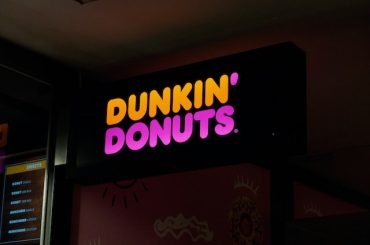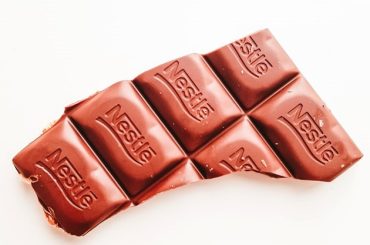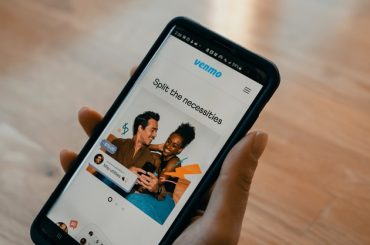Brands and movies have had a long-standing relationship since the independence. This relationship between a Brand and Movies has a popular jargon called Product placement or In-film advertising.
In layman’s terms, product placement is the promotion of branded goods and services within the context of a show or movie rather than as an explicit advertisement. These days, the concept has taken a tangential route where people with significant social media clout (read “influencers”) are creating content specific to a brand/product – of course, the consideration is sizeable moolahs.
The objective of such brand communication is the same as any other form of brand communication – that is, to expose the audience to a brand, whereby the effects can be maximized in terms of:
- increased awareness
- higher recall; and
- to satisfy the customer to an optimum level.
However, the visible difference is that being integrated in the content, it grabs the eyeballs of the audience completely.

How and when did In-film advertising start?
In Indian movies, this phenomenon was said to surface in the late 1960s. Madam Senior Pataudi (Sharmila Tagore) was seen sipping delicately from a 200 ml bottle of Coke.
Rajdoot, one of the popular bikes in the ’70s and ’80s was launched in the Rishi Kapoor starrer Bobby and in more recent times Maruti Suzuki had launched the Swift through Bunty Aur Babli.
Also, if we look across the globe, Bond Movies are a great example of luxury premium brands using the persona of James Bond to reach out to their TG. Luxury brands know that James Bond somewhat represents the aspirations of rich but middle-aged men.
Product placement is a sort of win-win situation for both the brand and the filmmaker. Through it, the brand managers get the clutter-breaking opportunity to look beyond the 30 sec TV commercial, and the filmmaker gets to earn huge revenues by just showing the brand being used by the protagonist or just let it exist in the background.
The procedure of In-film advertising
Sometimes brands pay movie marketing agencies for their product to be integrated into the film’s plot. These agencies then reach out to production houses, and there are times when production houses reach out to these marketing agencies.
How does this happen?
Either the product is served as a barter compensation or there is some financial remedy involved. A set dresser, producer, director, or even an actor might have the idea regarding a product to enhance the project. Usually, this has to do with boosting the level of credibility or realism of the story being told.
An example can be the use of the ‘Tata Indigo’ car in the movie Aaja Nachle. The car has been used as a mode of transport for the lead actress both when she arrives from abroad and also when she goes back. Interestingly the vehicle is widely used as a commercial vehicle in many Indian towns. So, the use of this car added a touch of realism to the movie. However, later, it was revealed through the car company representatives that there were no certain talks about placing their product in the film.

The relevance of Product Placement
Product placement has trickled down into short format content as well. In fact, many web-series these days have brand integration, and rightly so, it’s the biggest destination for advertisers to target affluent youth.
For example, Tata Motors paid TVF one million dollars for the association for Tripling. However, for any messaging for the brand, it ultimately comes down to brand positioning, segment & target audience. If all these three are firmly positioned in the right context, the placement looks seamless, subtle & class and the message gets hard-coded in the consumer’s mind.
One more example that can be valuable for product placement in a film or OTT web series could be a cause and/or TG addressed by the content and a brand that also represents that cause and/or TG. For example, a content set in a men’s hostel is a perfect foil for men’s grooming brands.
In fact, OTT platforms have demonstrated the steepest learning curve when it comes to in-content integration of brands. This appears in stark contrast to the traditional content medium like TV, Radio & Theatricals.
Also, placement of product or brand in the content has been the single-largest source of revenue for lot of OTT Platforms.

Since the revenue generation opportunity is so highly significant that OTT platforms have been extremely imaginative in the content and brand integration department. For Example – Most content on the TVF app provides good lessons in rightful brand integration along with pertinent content.
OTT Platforms have mastered the art of In-film advertising
With OTT platforms soaring high in this department, TV has not been left behind in adopting this tactic. However, specific to TV, it also seems that brands are coming across as desperate in forcing the integration.
An apt example – most brand integration on the current season of Indian Idol. Across all episodes, there are instances when the brands have ZERO relevance to the content. Thus, the producers create a “forced” moment to encash the moolah. This has no bearing on the stature / TRP of the content. But the integrated contents become tasteless & thus, makes consumer wonder about the intent of the integration.
Of course, such content doesn’t build lasting memories about the brand in consumers’ minds. Thus, it doesn’t aid in strengthening recall and loyalty. But then, as marketers, it makes one question the intent & objective of the brand marketer.

How can movies stay behind?
With regards to movies, almost all movies have associations with multiple brands across multiple categories to leverage the power of in-film advertising.
Is there a method to such integration? We have hardly observed that. However, there are specific trends causing such integration. They are:
- The lead actor/actress endorses the brand in real-life. So, they break the deal for integration. Even if the content might not mandate, it helps brands further strengthen the association between the celebrity & the brand.
- The brand is a tactical partner in the movie “make-to-release” process – Eg. Outdoor advertising agency, Print agency, multiplex partner, subsequent OTT platform partner, subsequent satellite rights winner.
To summarize, just like everything else, tactical stuff has negligible (tending to ZERO) shelf-life / results. A well-thought & woven strategy gets the most consistent & rewarding outcome. The same holds true for in-content integration of brands.
With product placement on the rise sometimes it does feel that unnecessarily the products are being shoved in front of the consumer’s eyes and sometimes it just feels the right kind of placement. Be it whatever, product placement is continuously gaining momentum, and it will be interesting to see how in the future various platforms from OTT to TV, etc. get more active on the product placement forum and use in-film advertising more innovatively.
Note: The author published this story in collaboration with Saumil Mehta
-AMAZONPOLLY-ONLYWORDS-START-
Also, check out our most loved stories below

Johnnie Walker – The legend that keeps walking!
Johnnie Walker is a 200 years old brand but it is still going strong with its marketing strategies and bold attitude to challenge the conventional norms.

Starbucks prices products on value not cost. Why?
In value-based pricing, products are price based on the perceived value instead of cost. Starbucks has mastered the art of value-based pricing. How?

Nike doesn’t sell shoes. It sells an idea!!
Nike has built one of the most powerful brands in the world through its benefit based marketing strategy. What is this strategy and how Nike has used it?

Domino’s is not a pizza delivery company. What is it then?
How one step towards digital transformation completely changed the brand perception of Domino’s from a pizza delivery company to a technology company?

BlackRock, the story of the world’s largest shadow bank
BlackRock has $7.9 trillion worth of Asset Under Management which is equal to 91 sovereign wealth funds managed. What made it unknown but a massive banker?

Why does Tesla’s Zero Dollar Budget Marketing Strategy work?
Touted as the most valuable car company in the world, Tesla firmly sticks to its zero dollar marketing. Then what is Tesla’s marketing strategy?

The Nokia Saga – Rise, Fall and Return
Nokia is a perfect case study of a business that once invincible but failed to maintain leadership as it did not innovate as fast as its competitors did!

Yahoo! The story of strategic mistakes
Yahoo’s story or case study is full of strategic mistakes. From wrong to missed acquisitions, wrong CEOs, the list is endless. No matter how great the product was!!

Apple – A Unique Take on Social Media Strategy
Apple’s social media strategy is extremely unusual. In this piece, we connect Apple’s unique and successful take on social media to its core values.
-AMAZONPOLLY-ONLYWORDS-END-

















